ISSN : 2287-9099
Vol.4 No.1

Abstract
Scholarly communication plays a significant role in the development and dissemination of research outputs in library and information science (LIS). This study presents findings from a survey which examines the key attributes that characterize the publishing by Pakistani LIS scholars, i.e. academics and professionals, in national journals. A pilot-tested, electronic questionnaire was used to collect the data from the target population. 104 respondents (or 69.3% of target) provided feedback on areas such as number of articles published, number of citations, and the nature of any collaboration with other authors. The findings of this survey revealed that, among the various designated regions of Pakistan, the Punjab region was the most highly represented. In articles published in national journals, there was a clear preference among all respondents to collaborate with at least one other author. The citation metrics for LIS articles in national journals were relatively low (30.22%), which aligns with Scimago’s Journal and Country Rankings. The uptake of social scholarly networks mirrors international trends. Respondents were asked to score factors which could impact negatively on their ability to undertake research and/or publish the results. The study recommends that concerned stakeholders work together, as appropriate, to address concerns. In addition, it recommends that further research be undertaken to define patterns of Pakistani co-authorship in the social sciences.











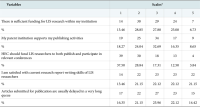

Abstract
Given the difference in research performance in various scientific fields, this study aims to weight and valuate current indicators used for evaluation of scientific productions (publications), in order to adjust these indicators in comparison to each other and make possible a more precise evaluation of scientific productions. This is a scientometrics study using documentary, evaluative, and survey techniques. The statistical population consisted of 106 top Iranian researchers, scientists, and scientific and research managers. Then their research résumé information was gathered and analyzed based on research questions. In order to compare values, the data gathered from research production performance of the population was weighted using Shannon entropy method. Also, the weights of each scientific production importance according to expert opinions (extracted from other works) was analyzed and after adjustment the final weight of each scientific production was determined. A pairwise matrix was used in order to determine the ratios. According to the results, in the area of engineering sciences, patents (0.142) in the area of science, international articles (0.074) in the area of humanities and social sciences, books (0.174), and in the area of medical sciences, international articles (0.111) had the highest weight compared to other information formats. By dividing the weights for each type of publication, the value of each scientific production compared to other scientific productions in the same field and productions of other fields was calculated. Validation of the results in the studied population resulted in very high credibility for all investigated indicators in all four fields. By using these values and normalized ratios of publication indicators it is possible to achieve precise and adjusted results, making it possible to feasibly use these results in realistic policy making.

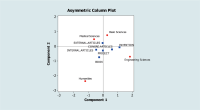






Abstract
The study tested a hybrid model with constructs drawn from the Technology Acceptance Model (TAM) and Diffusion of Innovation (DOI) theory in order to examine the moderating effect of productivity and relative advantage (RA) on perceived usefulness (PU) vis-à-vis electronic information resources (EIR) adoption in private university libraries in Ogun and Osun States of Nigeria. The descriptive research design was adopted in the study. The population consisted of 61 (55.0%) librarians and 50 (45.0%) library officers (totaling 116—100%) in Babcock University, Bells University, Covenant University, Bowen University, Oduduwa University, and Redeemer’s University. Purposive sampling procedure was adopted after which total enumeration was used since the total population is small. The questionnaire was used for data collection. Of the 116 copies of the questionnaire administered, 111 (95.7%) were found usable. The instrument was structured based on a 4-point Likert agreement scale of Strongly Agree, Agree, Disagree, and Strongly Disagree. Data were analyzed using descriptive statistics like tables of frequency counts and percentage. The findings revealed that productivity and relative advantage are significant moderators of perceived usefulness of EIR adoption in private university libraries in Ogun and Osun States, Nigeria.


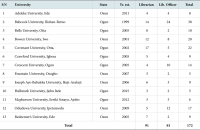

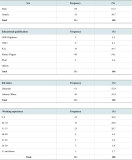




Abstract
What government does/fails to do is conveyed to the public largely by records and information of various types in the public service, without which there will be no government. When records are poorly managed, much time is involved in sorting and locating needed information from large volumes of records. The rate of records misplaced or lost from which useful information for decision making is usually obtained makes it difficult to provide concise and up-to-date records of both past and present operations, raising the challenge of effective record-keeping. Thus this study examined records management practices in selected local government councils in Ogun State, Nigeria, adopting the descriptive survey research method using questionnaires for data collection. Its population comprised 415 records of personnel in the selected councils, of which 208 were sampled using simple random technique. From the 208 copies of the questionnaire administered on the registry personnel, 150 copies were useable, with a 72.12% response rate. Descriptive statistics were used for the analysis. The results indicated a prevalence of paper as the dominant medium for recording/conveying information in the councils with most of these being either in active state, semi-active, and vital and were kept and maintained in the registry, while in-active records were kept in the records store. Storage facilities for record-keeping were insufficient. Security measures against unauthorized access to records were by restrictions and subject users to managerial clearance. The study concluded that council records were in chaos and recommended the formulation of coherent records management policy, adequate budgetary provision, and adequate finance.


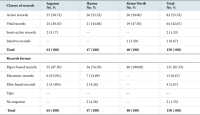
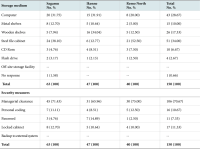



Abstract
Facebook has been a part of our lives for the last decade. For a company started in 2004 to have penetrated the lives of people across the globe is commendable. The perpetuation of Facebook has led to a phenomena called Facebook Addiction Disorder. Companies are using Facebook to promote their business and people are using it to promote themselves, in addition to staying connected. In this paper, an effort is made to study respondents from India and the United States of America in order to gauge their dependence on Facebook, and a comparative view of it is presented.





